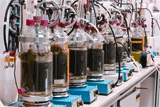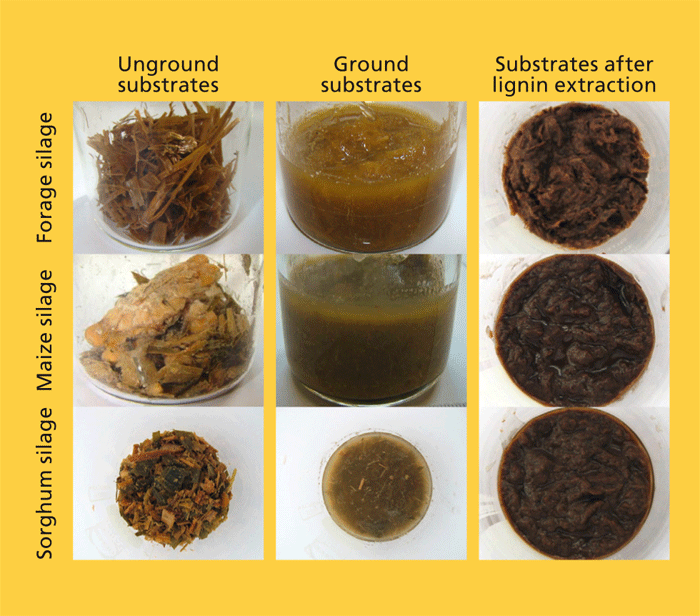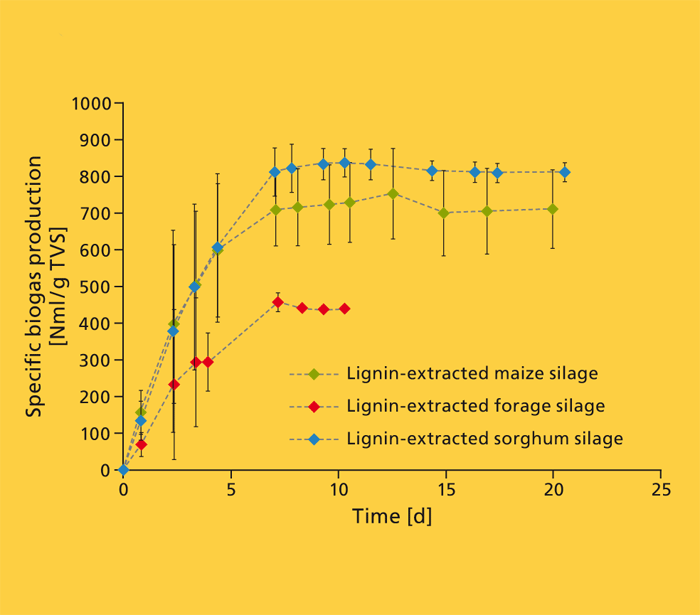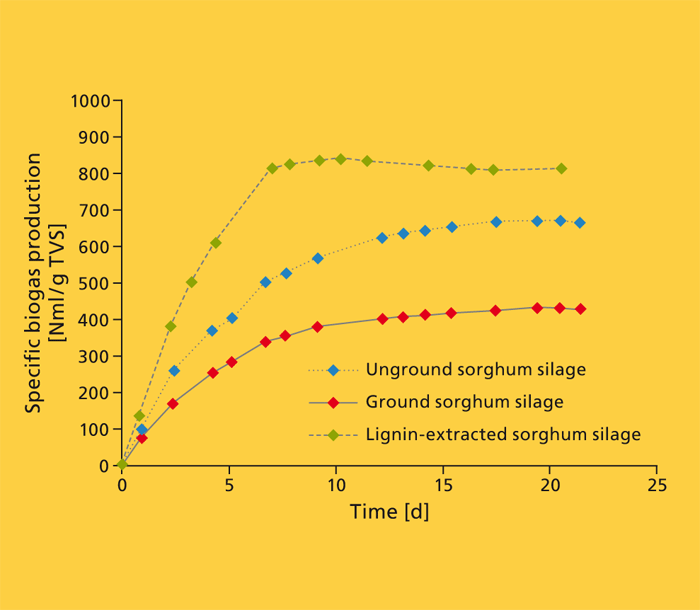Lignin in anaerobic digestion
In addition to liquid manure, agricultural biogas plants are mainly operated with renewable resources (NaWaRo), so-called energy crops. Against this background, breeding experiments have recently been aimed at increasing yields per hectare. However, higher yields, which seem to promise a higher biogas yield per cultivated area, are usually paid for with a higher proportion of lignin, the structural and supporting substance of the plants. However, lignin is not metabolised in biogas plants by the anaerobic mixed bacteria culture, so that only part of the increase in biomass can be converted into biogas [1]. The rest (lignin) leads to an increase in fermentation residues and usually has to be disposed of. The overall efficiency and economic attractiveness of the anaerobic digestion process for the production of methane can be considerably improved by pre-treating the substrates and recycling the product.
 Fraunhofer Institute for Interfacial Engineering and Biotechnology IGB
Fraunhofer Institute for Interfacial Engineering and Biotechnology IGB


